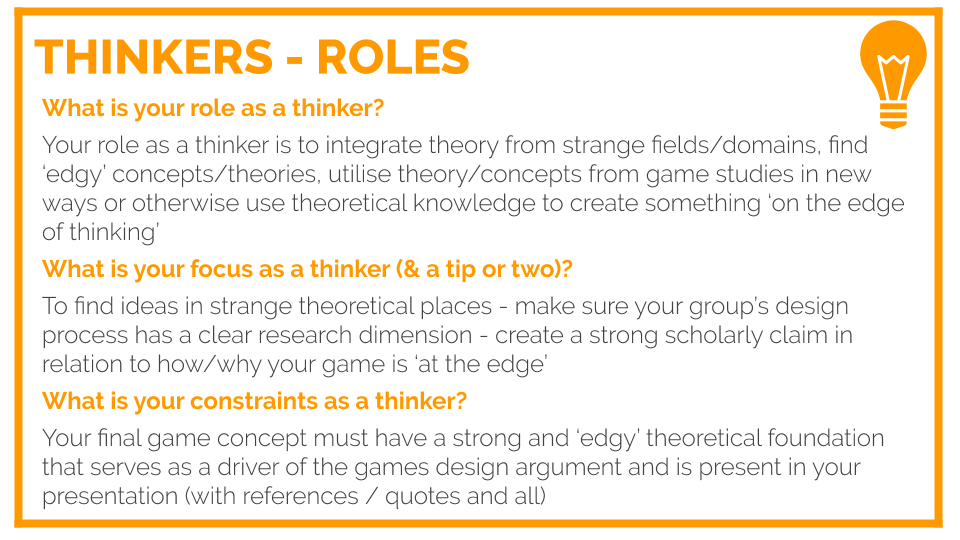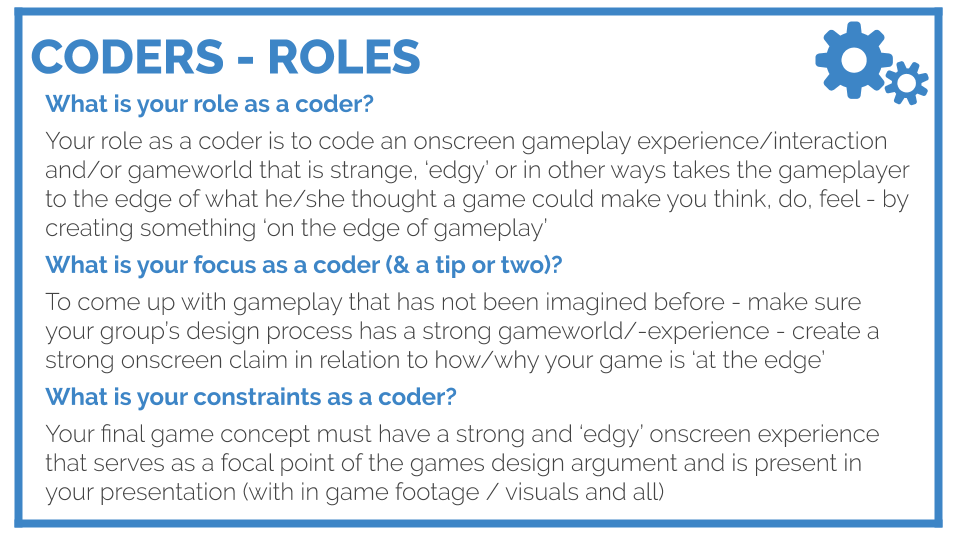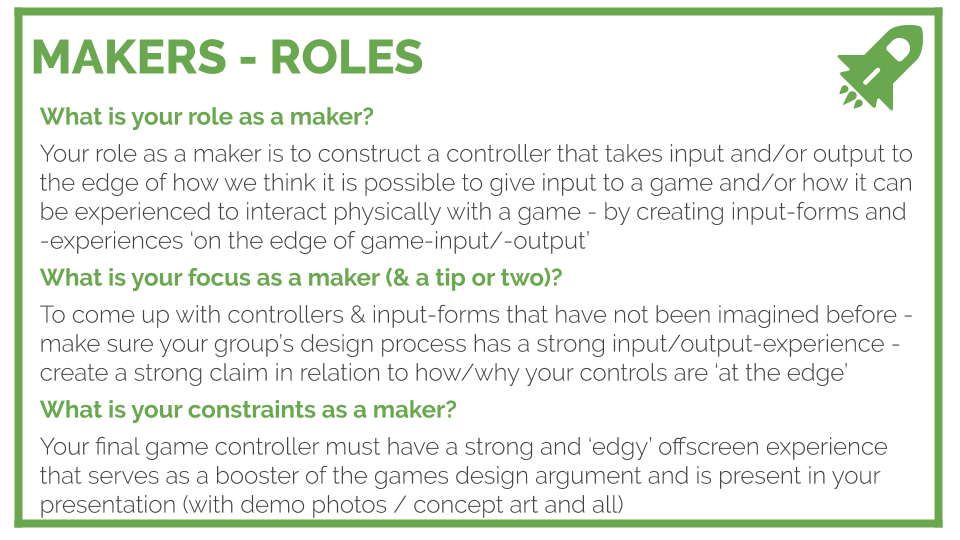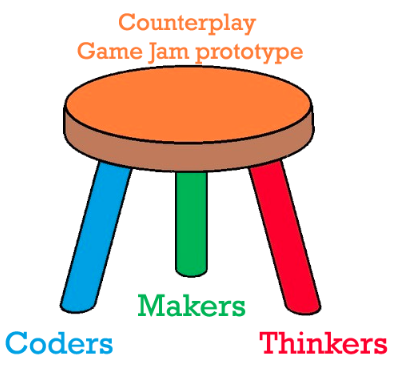3.2 Design team process and products: student cases
In this section you will get some insight into the examples the five design teams came up with and how they were developed.
3.2.1 Thinkers, Coders & Makers
After the presentations the five teams each divided themselves into three main roles or functions in the design team: Thinkers, Coders and Makers. Each role served as one of the three main components of the game jam that had to work closely together in order to create a game (Code) with a novel interface (Make) and based on theoretical thinking and academic argumentation (Think). You can see the three role cards the design teams were handed in the beginning of the game jam here:
 |
| (Click to Enlarge the Figure) |
 |
| (Click to Enlarge the Figure) |
 |
| (Click to Enlarge the Figure) Download all of the templates here |
|
|
| Conceptual Framework |
If game designers are working on their own they have to occupy all three roles and change between them during the design process. So, to make a well-thought and innovative game it is a good idea to have a diverse team consisting of both strong thinkers, creative makers and proficient coders.
During the game jam the design teams presented their game concept or prototype to the ‘Game Jam Council’ which consisted of the teachers involved in the game jam; Rikke Toft Nørgård, Claus Toft-Nielsen and Jeanette Falk Olesen. Here, they had to argue for the ‘edgy’ thinking, conceptual framework and academic argument underpinning the game concept (Thinkers), the novel interaction form, innovative controller and its connection to the game concept (Makers), the ‘edgy’ gameplay, programmed gameworld and onscreen game experience (Coders), as well as argue for how the three roles interlocked and connected in a holistic game concept.


